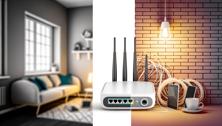Consider Your Needs
The first step in determining the right car for you is to consider your needs. Are you looking for a compact car for city driving or a larger SUV for family road trips? Think about your lifestyle, daily commute, and any specific requirements you may have.,If you have a long commute or frequently travel long distances, fuel efficiency may be a top priority. In this case, a hybrid or electric car could be a good option. On the other hand, if you often need to transport large items or have a large family, an SUV or minivan with ample cargo space and seating capacity would be more suitable.,Don't forget to also consider the climate in your area. If you live in an area with harsh winters, you may want to prioritize all-wheel drive or four-wheel drive for better traction on snow or icy roads.,By understanding your specific needs, you can narrow down the types of cars that will best meet your requirements.
Set a Budget
Next, it's important to determine your budget for a new car. This will help you narrow down your options and ensure that you don't overspend.,Consider not only the upfront cost of the car but also the ongoing expenses such as fuel, insurance, maintenance, and potential repairs. It's important to factor in these costs when setting your budget to avoid any financial strain in the future.,Remember, the price of a car is not the only consideration. Certain car brands or models may have higher insurance rates or require more expensive maintenance. Research the costs associated with different cars to make an informed decision.
Research and Test Drive
Once you have an idea of what kind of car suits your needs and budget, it's time to do some research. Look up reviews, ratings, and consumer reports for the cars you are considering. This will give you an idea of their reliability, safety features, and overall performance.,In addition to researching online, it's crucial to test drive the cars you are interested in. This will give you a firsthand experience of how the car handles, accelerates, and feels while driving. Pay attention to the comfort of the seats, visibility, and ease of use of the car's features.,During the test drive, take the car on different road conditions such as city streets, highways, and curves to get a comprehensive sense of its performance. Don't rush the test drive and ask the salesperson any questions you may have.,Remember, the goal of the test drive is to ensure that the car feels comfortable and meets your expectations. Don't be afraid to try out multiple cars and take your time in making a decision.
Conclusion
Choosing the right car is a significant decision that requires careful consideration. By assessing your needs, setting a budget, and doing thorough research, you can make an informed choice. Don't rush the process and take your time in finding the perfect car that meets your requirements and brings you joy. Good luck on your car shopping journey!









